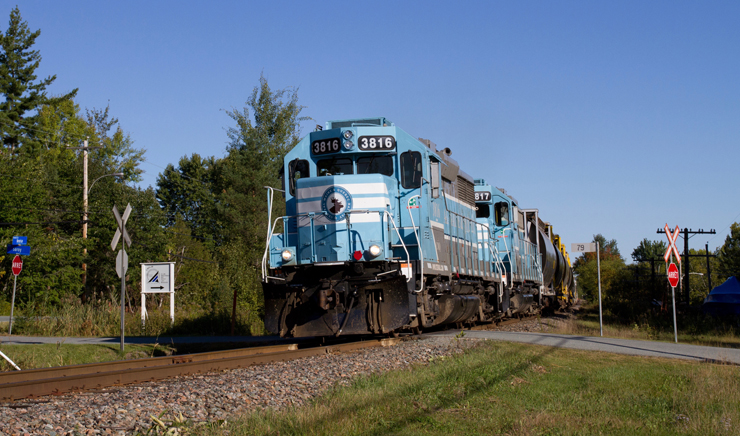BANGOR, Maine — Canadian Pacific Railway has announced it completed acquisition of the Central Maine & Quebec Railway on Dec. 30.
While the regional railroad is now owned by the CP, the deal still needs to be approved by the U.S. Surface Transportation Board. CM&Q will be placed into an “independent voting trust” and continue to operate as normal until the federal regulator approves the deal.
In a statement, CP officials wrote, “The acquisition, first announced on Nov. 20, 2019, will provide CP customers with seamless, safe and efficient access to ports at Searsport, Maine, and to Saint John, New Brunswick, via Eastern Maine Railway Company and New Brunswick Southern Railway, thereby preserving and enhancing competition.”
On Dec. 17, the CP filed an application with the STB to approve its acquisition of the 481-mile short line connecting Quebec with northern New England. The sale comes 25 years after the Class I railroad pulled out of the region when it sold its lines east of Montreal.
The application states that CM&Q will be owned by the Soo Line Corp., CP’s American subsidiary, which owns and operates the Soo Line Railroad Co.; Dakota, Minnesota & Eastern Railroad Corp.; and the Delaware & Hudson Railway Co. Inc. In November, CP officials told Trains News Wire that CM&Q “will continue to operate as a distinct and separate entity” [see “CP filing details plans for Central Maine & Quebec,” Trains News Wire, Dec. 19, 2019].
The CM&Q includes the former CP main line across eastern Quebec and western Maine to Brownville Junction, where it interchanges with the Eastern Maine Railway, owned by J.D. Irving. The railroad also includes the former Bangor & Aroostook north to Millinocket and south to Northern Maine Junction, near Bangor, and Searsport. CM&Q is also contracted by the State of Maine to operate the former Maine Central Rockland Branch.
In 1995, CP sold its main line to the Maritimes to Iron Road Railways and J.D. Irving. Iron Road merged its portion of the CP with the Bangor & Aroostook. In 2002, Iron Road sold the railroad to Ed Burkhardt’s Rail World Inc., which renamed it the Montreal Maine & Atlantic. The MM&A struggled through the 2000s, thanks in large part to the decline of Maine’s paper industry. In 2010, MM&A sold a large chunk of the former Bangor & Aroostook to the State of Maine that in turn leased it to J.D. Irving. In July 2013, an MM&A oil train derailed and exploded in the small town of Lac-Mégantic, Que., leveling more than 30 buildings and killing 47 people. The railroad filed for bankruptcy a month later and in 2014 it was sold to Fortress, which created CM&Q.















Interesting that the CP sold it for a quick buck because it was making as much money as they wanted. I’m not sure what they sold it for. But it may have cost them more to buy it back. That is great far sighted vision of railroad management.
SOFTBANK profit on sale?
CMQ has been dispatched by Railterm (I believe) which provides the necessary English and French dispatching.
CP dispatches the D&H from Minneapolis along with Soo line.
Since US law requires dispatching from a US location for US lines – although CP used to dispatch the St. John Division (International of Maine) from St. John, NB – anyone have an idea how CP will dispatch this line?
Legal and administrative issues favor leaving CMQ as a standalone. Operations can be integrated without a formal consolidation. Leases (equipment & realty) would need to be assumed by Soo Line if a formal consolidation would occur. Tariffs and commercial contracts need not be modified if left as a standalone.
Work rules may be more favorable on CM&Q and integrating within CP could lead to the loss of the more favorable work rules. Complete guess on my part.
Why keep CM&Q as a separate entity?